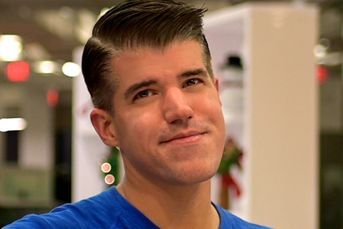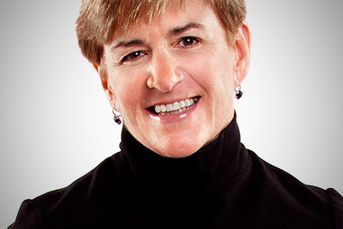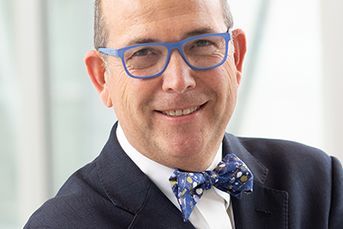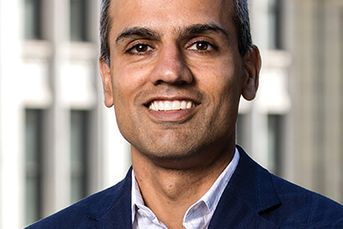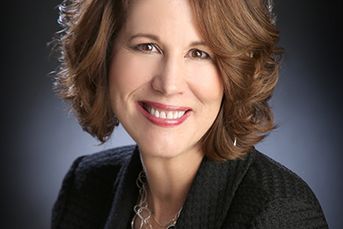Advisers and corporations pitch in for vital causes
The Invest in Others Charitable Foundation and InvestmentNews announce the finalists for the ninth annual Community Leadership Awards.
The Invest in Others Charitable Foundation and InvestmentNews have announced the finalists for the ninth annual Community Leadership Awards.
The awards will be presented Wednesday, honoring financial advisers who make a difference with their charitable giving and service in their own communities and around the globe.
A New Award
A new Corporate Philanthropy Award also will be given this year, highlighting a financial services company that has shown a sustained commitment to fostering charitable activities among advisers, employees and senior leaders of the firm. The five finalists are Commonwealth Financial Network, LPL Financial, Natixis Global Asset Management, North Star Resource Group and Voya Financial.
“These five companies represent the best of the best, offering benefits such as generous matching gift programs, annual paid volunteer time off, and programs that encourage all employees to work together to contribute thousands of hours of volunteer time to organizations that mean so much to them and their communities,” said Megan McAuley, executive director of Invest in Others.
The winner will receive a $2,500 donation to the firm’s choice of charities.
The adviser awards categories are Volunteer of the Year, Community Service, Global Community Impact, Catalyst and Lifetime Achievement, which features the volunteer efforts of an adviser who has worked with a charity for at least 10 years and has created a lasting impact.
Charitable donations of between $20,000 and $25,000 will be given to winners in each of these five categories, while the other finalists will receive $5,000 each for their charities.
The Invest in Others Charitable Foundation and InvestmentNews received several hundred nominations for this year’s CLAs, as well as dozens of nominations for the inaugural Corporate Philanthropy Award.
“All of the stories we receive are incredible,” Ms. McAuley said. “This year’s finalists give back to communities in significant ways, from helping children in other countries receive life-changing medical care to empowering women through financial education.”
WAYNE BISEK
Lifetime Achievement
When does $40,000 equal $100,000? When you leverage your resources, said Wayne Bisek, owner of Wayne Bisek Financial Services in Oregon, Wis., and founder of Buckets for Hunger.
Over the past 20 years, the charity, which originated from a celebrity basketball game, has raised $2 million for food pantries, primarily in Wisconsin, using sports-themed events. Typical fund-raisers include cel-ebrity dinners, silent auctions at sports events and trivia challenges.
Buckets for Hunger, which has no paid staff, does not just hand a check over to the recipient groups, but teaches them how to raise money for themselves.
The money that Buckets for Hunger raises is used as challenge funds, providing a percentage match against any new funds the food pantries raise themselves. The percentages available depend on the amount of funds raised and the number of pantries participating in a given year.
The incentive works. In 2014, Buckets for Hunger raised $40,000, which enabled 14 food pantries to bring in an additional $60,000 of new contributions.
“About 90% of the pantries we’ve helped have no professional staff,” Mr. Bisek said. “These funds result in the majority of some pantries’ annual budgets.
“It’s all about leveraging — other people’s connections, skills, desire to help and money,” he added.
TED SCHWAB
Lifetime Achievement
In 1992, Ted Schwab, a founding partner of Steward Partners Global Advisory in Washington, D.C., had a vision to help thousands of children.
His inspiration turned into Capital Partners for Education, a mentoring and college success program for local low-income students. CPE provides high school and college students with one-on-one mentoring, individualized support, college and career readiness programming, and academic financial assistance. More than 500 students have been served since the organization’s founding 23 years ago.
The results are noteworthy, as 97% of CPE high school graduates enroll in college, and 70% of those graduate successfully.
Mr. Schwab takes a very long view of this work. He wants to see the number of children involved compound each year, in D.C. and elsewhere, until the program serves thousands and even millions over the next hundred years.
The program affects people and communities beyond the students.
“In the local community, CPE is often the light bulb that goes off for other family members and friends who see the success of their loved ones,” Mr. Schwab said.
“For volunteers, it’s transformational for mentors and board members, seeing what they can do,” he said. “They can change the trajectory of a student’s life.
“The monster ripple effect,” he said, “is if this can plant seeds in people’s minds to do this in their own communities.”
BOSWORTH TODD
Lifetime Achievement
“While my journey started out as a desperate attempt to find help for my son and my family, it quickly became something bigger,” said Bosworth Todd, chairman emeritus of Todd Asset Management in Louisville, Ky. He is one of the founders of Wellspring, which provides supportive housing and rehabilitative services to people with mental illnesses.
In 1975, Mr. Todd’s 18-year-old son, Sam, was diagnosed with schizophrenia. At the time, the community offered no effective support for individuals with such a debilitating condition. Sam repeatedly spent months in either flophouses or hospitals, his illness never brought under control. His family was devastated.
“I took my grief and channeled it into getting the community involved and getting Wellspring off the ground,” Mr. Todd said.
He threw himself into organizing other parents, educating the community, fundraising, even testifying before Congress, and by 1982 had helped establish Wellspring and its first supportive housing program. His son was the first resident.
Over the past 33 years, 7,000 other people have been helped.
Mr. Todd remembers with gratitude the impact Wellspring had on his son, who has since died.
“He was never hospitalized like that again,” he said. “His needs were being met without stress, in a quiet setting; with food, shelter and medication reminders. It normalized his life as much as possible.”
TOM TESSIER
Volunteer of the Year
Some folks in New Hampshire have figured out a successful way to support local military families, and the concept is spreading rapidly across the U.S.
“You don’t have to go too far to know someone who served or has been injured,” said Tom Tessier, a financial adviser with Weisman Tessier Lambert & Halloran in Nashua, N.H. He is a Vietnam veteran and co-founder of the Nashua chapter of Veterans Count, a subsidiary of Easter Seals Military and Veterans Services.
Veterans Count, which originated in Manchester, N.H., helps military clients with financial assistance and services when no other resource is available. Statewide, round-the-clock care coordinators help service members before, during and after deployment, serving more than 300 individual cases monthly. Mental health counseling and suicide prevention are key services.
Since the chapter launched in 2012, Tessier and fundraising partner Sy Mahfuz have raised more than $1 million just from the Nashua community. He credits the human touch.
Volunteer fund-raisers, also veterans, meet face-to-face with community leaders to talk about the experiences of local military families. The response has been exceptional.
The success of this small chapter has attracted attention across the U.S., and chapters have started up in seven other states. Easter Seals was so impressed that it recently decided to roll out Veterans Count nationally.
JEFFREY KEEFE
Volunteer of the Year
Jeffrey Keefe, founding principal of Whole Wealth Management in Portsmouth, N.H, had an unstoppable vision to bring some vitality to his downtown neighborhood over the long winters.
His office overlooked a large empty area on the campus of the Strawbery Banke historic village museum and he knew it was the perfect place for a community skating rink.
He pitched the idea to the museum in January 2012. The administration supported the idea, but had no funds to move it forward. With the museum’s blessing, Mr. Keefe decided to spearhead the project. A bumpy road lay ahead.
After almost three years of planning, pursuing zoning variances and building approvals, battling a lawsuit by a group of “not in my backyard” neighbors, raising $500,000 in donations, recruiting $500,000 in pro bono services, and developing design and construction plans, the public rink opened in December 2014, serving 22,000 skaters in its inaugural season.
“What kept me going? The community and my passion,” Mr. Keefe said. “We had an online community of nearly 2,000 people with lots of ongoing dialogue. That kept me motivated.”
There were two primary outcomes of his journey, he said. “The process enabled thousands of people to support a vision, and now we have a place to enjoy community all year long.”
GREG V. KATULKA
Volunteer of the Year
Greg Katulka, a senior financial adviser at Bank of America Merrill Lynch in Gainesville, Ga., tends to be low-key about his achievements as board chairman of the Boys & Girls Clubs of Hall County. But when pressed, he admits that it was his persistent nature, coupled with his background as an adviser, that helped the charity raise nearly $5 million, as well as substantially expand its future revenue streams.
Hall County is a fast-growing distant suburb of Atlanta with large pockets of poverty. The charity serves 5,500 children per year at club locations and at school-based programs.
With his people skills and process improvement acumen, Mr. Katulka was able to:
• Initiate a planned giving program.
• Refine the donor cultivation process into a series of distinct steps, which include taking prospective donors on tours, inviting them to special events featuring the children, and following up to gauge feedback and interest.
• Help increase the endowment by launching an ambitious campaign with clear goals to take fundraising to the next level, seek community acceptance for the organization and aim for financial independence.
• Develop a process for the orientation of new board members, resulting in enhanced board performance.
“Part of being an adviser is — you become comfortable talking to people about money,” Mr. Katulka said. “I was somebody who kept pushing to raise more money.”
ROB SHICK
Community Service
Life’s pretty funny. One day you’re a normal guy, minding your own business, and the next, you’re a miraculous cancer survivor raising half a billion dollars around the country for ground-breaking cancer research.
In 2005, Rob Shick, now senior vice president of Robert W. Baird & Co. in Portland, Ore., received a devastating diagnosis: a rare type of leukemia. The prognosis was three to five years’ survival.
Fortunately, he was prescribed a new, molecularly targeted cancer drug by its inventor, Dr. Brian Druker, who worked at the nearby Oregon Health and Science University. Within 12 weeks, the cancer was undetectable in his system.
Mr. Shick, feeling immeasurable gratitude, offered to help Dr. Druker and the OHSU Knight Cancer Institute in any way possible. He started speaking to groups about his recovery and soon began taking volunteer leadership roles in several multimillion-dollar fund-raising campaigns.
Most recently, his team met a $500 million fund-raising challenge to match another $500 million from Nike founder Phil Knight and his wife, Penny, for a research initiative at OHSU focused on early detection.
“From the moment I was diagnosed, I felt there was a higher purpose for me,” Mr. Shick said. “If you open up your mind to things, you never know what’s possible.”
CHAD E. GREER
Community Service
Chad E. Greer, a wealth management adviser with Northwestern Mutual in Nashville, Tenn., started on the road to philanthropic leadership at a young age.
In 2000, the 26-year-old, influenced by his civically active family and a mentor, joined the Sennet Society, a program of the United Way of Metropolitan Nashville for individuals 25 to 40 who donate $500 per year.
From 2004 to 2014, Mr. Greer served as campaign ambassador for the group, recruiting more than 200 new donors who contributed $300,000 in annual gifts.
He also served as co-chairman from 2010 to 2013 of the Next Gen chapter of the Tocqueville Society. His organization grooms individuals under 45 for membership in the regular society of donors who give at least $10,000 per year. Despite the challenging economic climate, Mr. Greer recruited 60 new donors using a three-year ladder/
match approach.
The first year, the younger donor gives $5,000, with another $5,000 matched by senior Tocqueville members. The second year is a $7,500 gift, with a $2,500 match, and the third year the Next Gen member gives the full $10,000.
Junior and senior members enjoy events together.
“The older generation got so much energy from being with the younger people,” Mr. Greer said. “When you get people involved, you get them on track for giving.”
FREDERICK J. GILLIS III
Community Service
In 2010, Frederick J. Gillis III, a financial adviser with Wells Fargo Advisors in Boston, agreed to chair the capital committee for the renovation of the West Roxbury YMCA. The project had been in the works since 2007.
Little did he know the roller coaster ride awaiting him — an economic recession, funding delays, administration changes, and continual stops and starts.
“Every roadblock we hit created opportunities,” Mr. Gillis said.
The 2008 economic meltdown delayed funding and construction, but created an opportunity for the agency to expand by taking over neighboring properties.
A new district administration came on board, which resulted in more delays and a complete overhaul of the expansion plan.
Time dragged on.
“Donor fatigue was huge. The community stopped believing in the project,” Mr. Gillis said. “That only motivated me to give them even more. I thought, ‘I’d better make it really good.’”
Ultimately, his multiyear journey, which started with a $4 million building renovation, ended with the creation of a $23 million campus with multiple facilities finally on track for completion by the end of 2015.
How did he succeed?
“My desire to improve my community pushed me forward,” Mr. Gillis said. “I’m more persistent than I thought. It never occurred to me to stop.”
DEBRA BREDE
Global Community Impact
For Debra Brede, founder of D.K. Brede Investment Management Co. in Needham, Mass, it’s all about getting up close and personal.
Ms. Brede is a co-founder of Agape International Inc., which operates seven children’s homes and a school for 250 AIDS orphans in Hyderabad, India.
She has been to India nine times since 2007.
When she arrives, she hits the ground running, attending to immediate needs large and small, such as providing and installing mosquito nets, purchasing a school bus to expedite the children’s travel to school from their various locations, and installing 12 computers and printers for training the students.
With proper care and medication, the children lead full and normal lives. As they grow older, Agape also supports them through college.
The children are part of Ms. Brede’s life now.
“These kids have no parents — my husband and I are like surrogate parents,” she said. “They’ll save their things to show you every year.”
Ms. Brede said she identifies with them.
“I grew up in poverty. It pushed me to get an education. I needed someone to speak into my life, to say, ‘You can do it,’” she said. “That’s what I do with these kids. I tell them, ‘You’ll never get out of here unless you get an education.’ Writing a check alone can’t do that.”
RICHARD ALBERT GAGNÉ
Global Community Impact
Richard A. Gagné, a wealth management adviser with Richard A. Gagné & Associates in Beaumont, Texas, has devoted his heart and soul to the Mbabaali Memorial School for Orphans in Uganda. It’s easy to understand why.
Mbabaali, a licensed orphanage and the only free school in Uganda, is home to hundreds of children who have seen their parents die of malaria, typhoid or yellow fever, AIDS or war atrocities.
Mr. Gagné first visited in 2003, and the school immediately became a major focus of his life. Since that time, he has donated $600,000, which allowed the school to grow from 30 to 267 students. In 2008, he established the Richard Albert Gagné Charitable Foundation in order to sustain the school after his death.
In addition to paying all the teachers’ salaries, he has added eight buildings to the campus and established a sponsor-an-orphan program.
“This is a country where life is considered very cheap,” Mr. Gagné said. “My goal is to protect these children and get them an education.”
Each visit is tremendously fulfilling for him.
“It takes four hours to hug each child. It’s a real lesson in humility and spiritual growth,” he said.
“These graduates are the ones who will make the changes in the country. My job is to get this message out.”
BILL PICKENS
Global Community Impact
Sometimes, all you have to do is ask. In 2007, Bill Pickens, a senior vice president with Wells Fargo Advisors in Germantown, Tenn., decided to start Gift of Life Mid-South, a local chapter of an organization that provides free, life-saving heart surgery for children from impoverished countries. He was supported in this endeavor by his local Rotary Club.
Mr. Pickens approached the new chief executive of LeBonheur Children’s Hospital in Memphis, Tenn., to request that the institution donate its services for the program.
“She listened and listened, and nodded,” he said, “and when I was done, she simply said, ‘OK.’”
It turned out the CEO had been running the same program at her previous hospital.
In addition to medical services, Gift of Life Mid-South provides money and logistics to get the children and parents to Memphis, as well as hospitality and emotional support.
Over the past eight years, the charity has saved the lives of 61 children and has been embraced by the entire Rotary district, encompassing 41 clubs.
Many volunteers keep the program running, including one special one — Mr. Pickens’ 8-year-old granddaughter, Sara Grace, who has served as a soothing friend to the young patients for the past three years.
“She breaks the tension for the patients. This is families helping families,” he said.
STACY FRANCIS
Catalyst
In 2003, Stacy Francis, chief executive of Francis Financial in New York, founded Savvy Ladies to honor her late grandmother, who was financially trapped in an abusive marriage. The aim of the organization is to create a secure forum for women to network and ask questions related to finances.
Twelve years later, Savvy Ladies is still going strong. Over the years, it has provided 12,000 women with free financial education. Almost all of the participants have been single women. The growth has occurred solely through word of mouth.
The services fall into three categories: live lectures, webinars (about 50 programs per year, archived and accessed for free) and a help line. Ms. Francis said the help line is the only one in the country that provides a free one-on-one consultation with a certified financial planner for 30 minutes or more.
“The call volume has become almost overwhelming,” she said.
The need to educate women has resonated with the high-powered volunteers, board members and corporations from the financial world who have come forward to donate funds and services.
“The biggest takeaway for women is, whether you’re married or not, you have to be in charge of your own finances,” Ms. Francis said. “It’s not an option anymore to just let your husband handle the money, especially with a 50% divorce rate and women outliving men.”
RON CARSON
Catalyst
The Dreamweaver Foundation, co-founded in 2012 by Ron Carson, chief executive of Carson Wealth Management Group in Omaha, Neb., and his wife, Jeanie, fulfills end-of-life dreams for impoverished seniors with terminal illnesses.
The charity taps into a place in all of our hearts.
Mr. Carson was inspired by his family’s efforts to make his father-in-law’s final days happy ones.
About 90% of the “dreamers” are in nursing homes or hospice care. Nearly 40 dreams have been fulfilled so far, with another 27 in the works.
One dream entailed flying a granddaughter in with her new baby, so the recipient could see his first great-grandchild. He died the next day.
Another allowed a husband and wife, both gravely ill, to have a long wished-for fancy dinner, along with fancy clothes to go with it.
“When people have something to live for, they’ll find a way to live,” Mr. Carson said.
The foundation keeps the positive feelings going by keeping recipients in touch with each other, creating a much-needed sense of community.
The charity has attracted substantial financial support from the community and is growing rapidly — it hired an executive director in January 2014 and a new chapter is being formed in San Diego.
“It’s a tremendous return on my psyche,” Mr. Carson said. “It nourishes my soul.”
RICK ARMIGER
Catalyst
A diagnosis of heart disease can radically change how people see themselves, said Rick Armiger, a vice president with Morgan Stanley Wealth Management in Baltimore. In 2005, he co-founded the Ironheart Foundation, which focuses on enhancing the lives of people with heart disease.
His inspiration came from two sources — his desire to help his best friend and co-founder of the foundation, David Watkins, face life after dramatic and unexpected heart surgery; and the loss of his 19-day-old son, Emerson, from a congenital heart defect.
“Cardiac patients often feel like they’re defective,” Mr. Armiger said. “They feel shackled — that they can’t live life to the fullest.”
He added: “There’s a gaping need to feel part of a community. We try to encourage, empower and educate them on what they can expect, how they can heal and how they can challenge themselves physically and mentally to improve their lives after this diagnosis has been made,” he said.
Over the past 10 years, Ironheart has grown from one racing team of cardiac patients to racers from 48 states and 19 countries participating in more than 1,600 athletic events annually. The charity now offers education, training, a doctor referral network for patients and distribution of defibrillators.
“Their lives are not over,” Mr. Armiger said. “We get them to focus on what they can do, not what they can’t do.”
NORTH STAR RESOURCE GROUP
Corporate Philanthropy
Charity is part of the fabric of the North Star Resource Group, which donates 10% of its profits to its in-house nonprofit, the Scott Richards North Star Charitable Foundation, named for the late son of company chief executive Phil Richards.
The foundation focuses on six main causes: ataxia, Alzheimer’s disease, the “Bikes for Kids” project, breast cancer, cystic fibrosis and myelofibrosis.
The charity’s matching gifts program has not only stimulated employee giving, but also spawned several charitable spin-offs, inspiring employees to create their own events and even their own nonprofits.
Two very strong drivers behind this spin-off activity:
1. The company allows employees to develop these activities on company time.
2. The foundation provides generous matching gifts, even for causes beyond its designated focus areas.
“We consider projects driven by employee ideas,” said Mr. Richards. “We will match anything, as long as they put in their own personal time to show that they’re passionate about their cause.”
North Star looks specifically for passionate employees as part of its hiring process, he said.
“One of the questions we ask when we interview is: ‘Tell me what you’re grateful for.’ The ones who say ‘my parents’ or ‘being alive’ or ‘having opportunity’ — these are the people that are going to give back.”
NATIXIS GLOBAL ASSET MANAGEMENT
Corporate Philanthropy
Volunteerism at Natixis Global Asset Management grew at such a fast pace that the company had to create a process for it. The result was the Ambassador Program, which matches nonprofit partners’ specific needs with volunteers with relevant skills.
It was started after a small group of employees began running three or four volunteer activities a year, said George Patsouris, vice president of human resources. Within two years, so many employees had joined them, the number of activities snowballed.
“Activities started to run monthly and as our reputation grew, nonprofits started to approach us to ask for help,” he said.
In response, Natixis conducted companywide focus groups, identifying four main social causes on which to concentrate.
Employees brainstormed how to best serve the nonprofits and decided it was most important to get to understand them and their unique needs, almost as volunteer employees. Consequently, “ambassadors” work with 12 selected charities.
The program not only formalized, but increased volunteerism, Patsouris said.
“It allowed for more flexibility — volunteer opportunities were targeted by skills (such as legal or information technology), which provided a more fulfilling experience. And volunteers could schedule activities ahead of time and in small time slots.”
Indeed, the Natixis ambassador concept is now global, with eight teams in Boston, two in San Francisco and two in London.
COMMONWEALTH FINANCIAL NETWORK
Corporate Philanthropy
Broker-dealer Commonwealth Financial Network has a vigorous volunteer landscape, running about 40 employee-led volunteer programs per year. And it manages its corporate volunteerism using its own 501(c)(3) nonprofit organization called Commonwealth Cares.
“It’s the conduit and branding we use to channel our giving through,” said Commonwealth chief executive Wayne Bloom, a member of the Invest in Others board.
The internal nonprofit serves several functions, including collecting donations, enabling donors to receive tax deductions, funding programs and providing matching funds.
Employees pitch ideas for projects to the Commonwealth Cares board, which consists of Mr. Bloom and three others, plus several rotating members chosen from among volunteer program leaders.
“It gives employees a chance to shine,” he said. “We’re having leaders emerge — they have to speak, tell their story and organize projects.”
The board itself comes up with volunteer projects that are included in conferences all over the world. Both employees and clients (financial advisers) have participated in endeavors such as rehabbing schools in Ireland and Costa Rica. Mr. Bloom said these are the most popular activities among conference goers.
“The relationships that are formed between the employees and the advisers — the bonding that occurs when you’re hammering and painting — is incredible,” Mr. Bloom said.
LPL FINANCIAL
Corporate Philanthropy
With its Employee Volunteer Corps, LPL Financial has put into place a mechanism that makes employee volunteering an honor and a privilege. And it has been working well.
In 2014, this elite group of 29 volunteer leaders — spread across the Boston, Charlotte and San Diego offices — led 38 projects and generated 870 volunteer hours among themselves and others, equal to 25% of total company volunteer hours.
Typical volunteer events focus on economic empowerment, such as teaching financial literacy, mentoring underserved students, or helping with résumé writing and mock interviews.
The volunteer unit was founded in 2008, the brainchild of Heather Randolph Carter, president of the LPL Financial Foundation. She had the needs of millennials in mind.
“They are especially influenced by their peers,” Ms. Carter said. “In order to have the impact we wanted on our communities, we knew we could do it better by engaging a team of employees, rather than just as a [foundation] board.”
Volunteer leaders are selected by the board for a two-year term, based on their personal stories and the diversity they represent (geographical, business unit, tenure, demographics).
The selected employees enjoy a unique opportunity for professional development, in the form of project management, event execution, public speaking, and engaging with executive leaders who participate in volunteer activities.
VOYA FINANCIAL
Corporate Philanthropy
Voya Financial (formerly ING U.S.) has a clear and comprehensive infrastructure for community investment, including grant making and charitable giving on the corporate side, and matching gifts and paid volunteer time away on the employee side.
The organization has identified two priority areas to focus on — financial education and children’s education — which it addresses through a variety of “signature partnerships.”
One of these partnerships is an innovative program called the Voya-Girls Inc. Investment Challenge. Through this initiative, teams of economically disadvantaged girls, ages 12 to 18, receive mentoring by Voya employees from the investment management group. Many of the employee mentors are women.
The program provides the girls with a structured financial education curriculum, classroom instruction, and hands-on experience with constructing and managing real-time stock portfolios.
Voya donates a certain amount of actual funds for the girls to use, and they are allowed to keep a portion of their gains to help pay for college.
Since 2010, the program has grown to 12 teams of girls at nine sites across the U.S.
“The girls are getting exposed to finance and financial independence in a way most children their age don’t have an opportunity to do,” said Angela Harrell, vice president of corporate responsibility.
“It empowers them by giving them real money and letting them work with real money managers.”
Learn more about reprints and licensing for this article.

